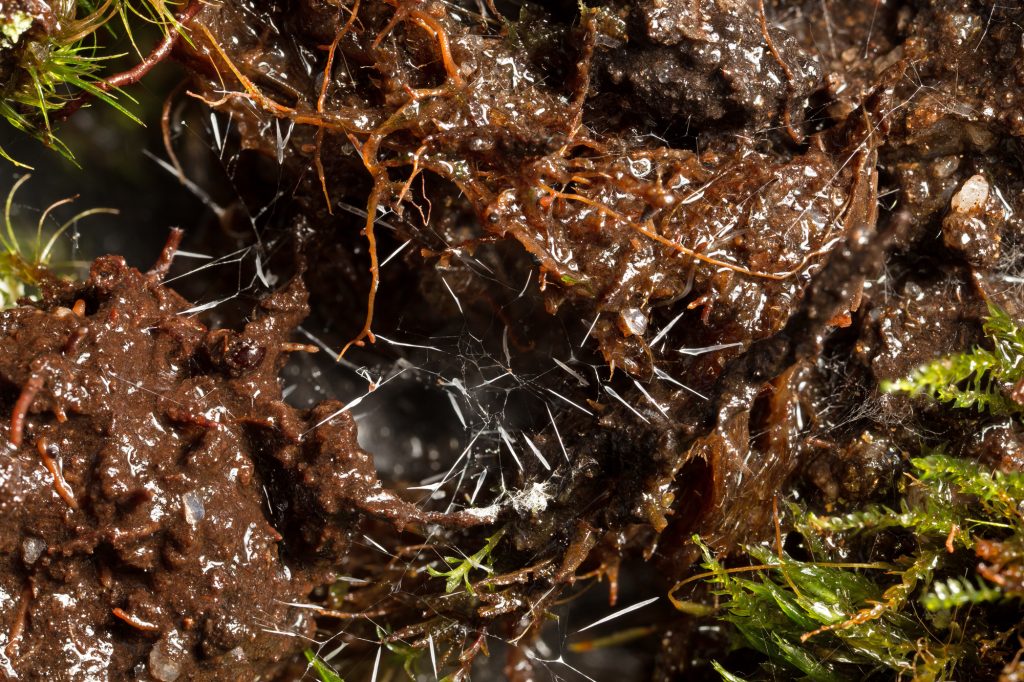
The toxic web of Orfelia fultoni (Diptera, Keroplatidae)
- While on a collecting trip to the Pisgah Mountains of North Carolina, we found the fly Orfelia fultoni. These luminous fly larvae dotted the mossy bank of a spring and emitted a continuous blue glow. The spectrum is the bluest of any terrestrial bioluminescence, and originates from the larva’s head and tail. This luminescence has been experimentally shown to be effective in attracting insect prey (Sivinski, 1982). The fly larvae, which were about 1 cm long and translucent, appeared on the surface of the moss suspended in a web adorned with little ampules of clear fluid. In the image above, the fluid-filled ampules appear as tiny white cones, and you can see the larvae just to the right of the web in the middle of frame, you’ll have to look close. The ampules are filled with oxalic acid and when an entangled insect disturbs them, they rupture spilling the toxic fluid onto the insect prey (Fulton, 1939).
References
- Fulton, B. B. (1939). Lochetic luminous Diptera larvae. Journal of the Elisha Mitchell Scientific Society, 55, 289-293.
- Fulton, B. B. (1941). A luminous fly larva with spider traits (Diptera, Mycetophilidae). Annals of the Entomological Society of America, 34(2), 289-302.
- Sivinski, J. (1982). Prey attraction by luminous larvae of the fungus gnat Orfelia fultoni. Ecological Entomology, 7(4), 443-446.
- Viviani, V. R., Hastings, J., & Wilson, T. (2002). Two Bioluminescent Diptera: The North American Orfelia fultoni and the Australian Arachnocampa flava. Similar Niche, Different Bioluminescence Systems. Photochemistry and Photobiology, 75(1), 22-27.
- The adventurous blog of Danté Fenolio: anotheca.com/wordpress

